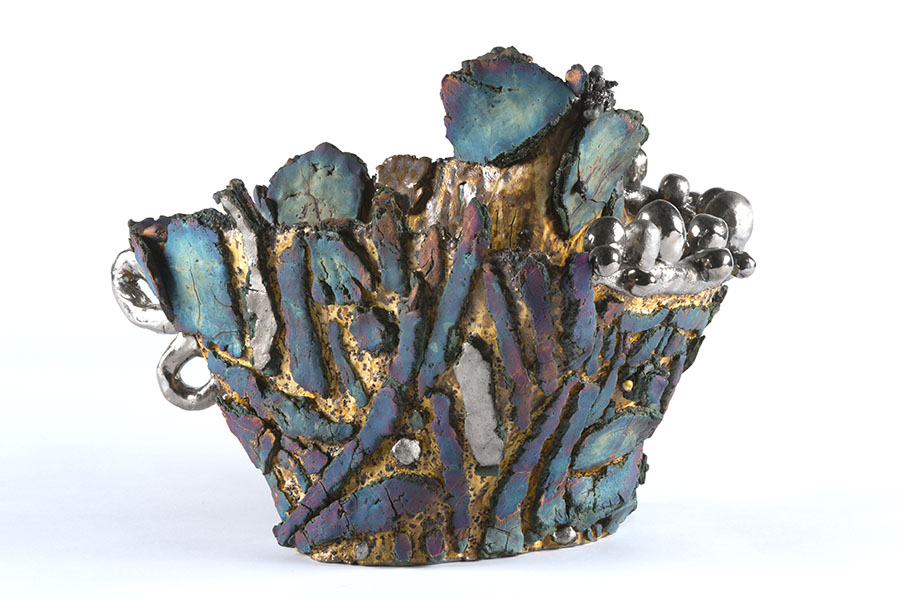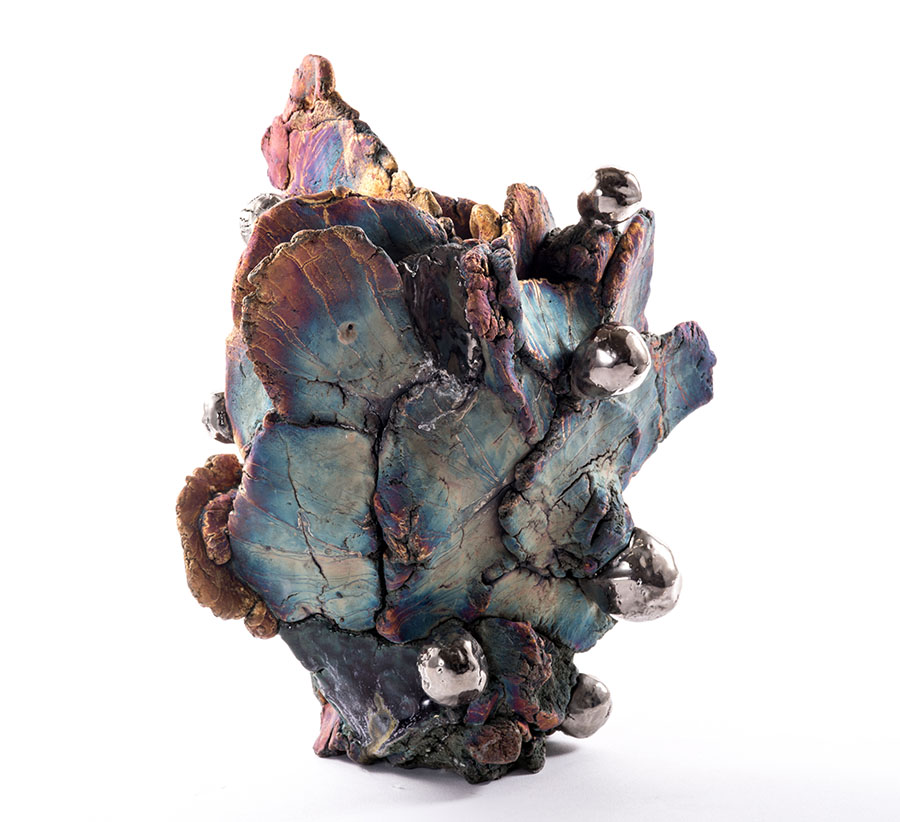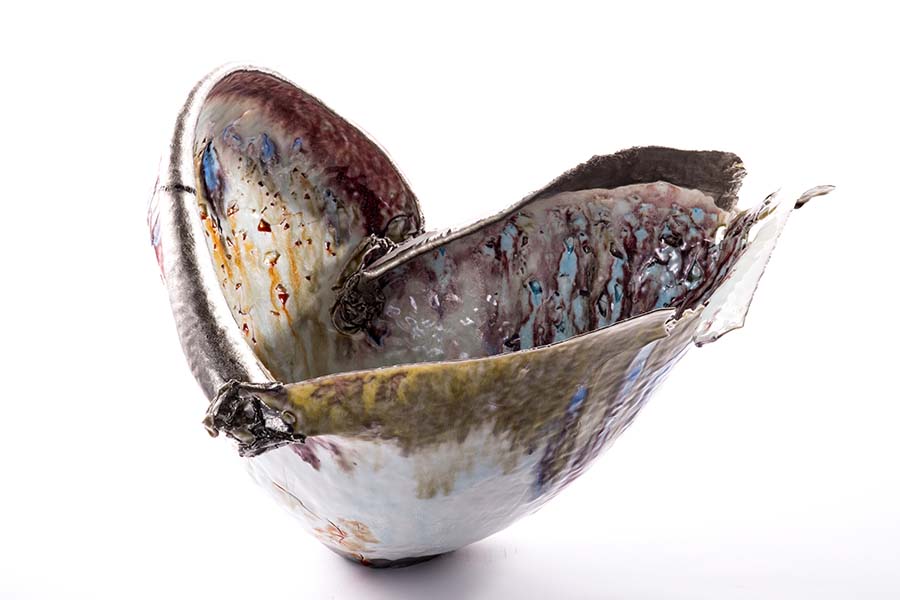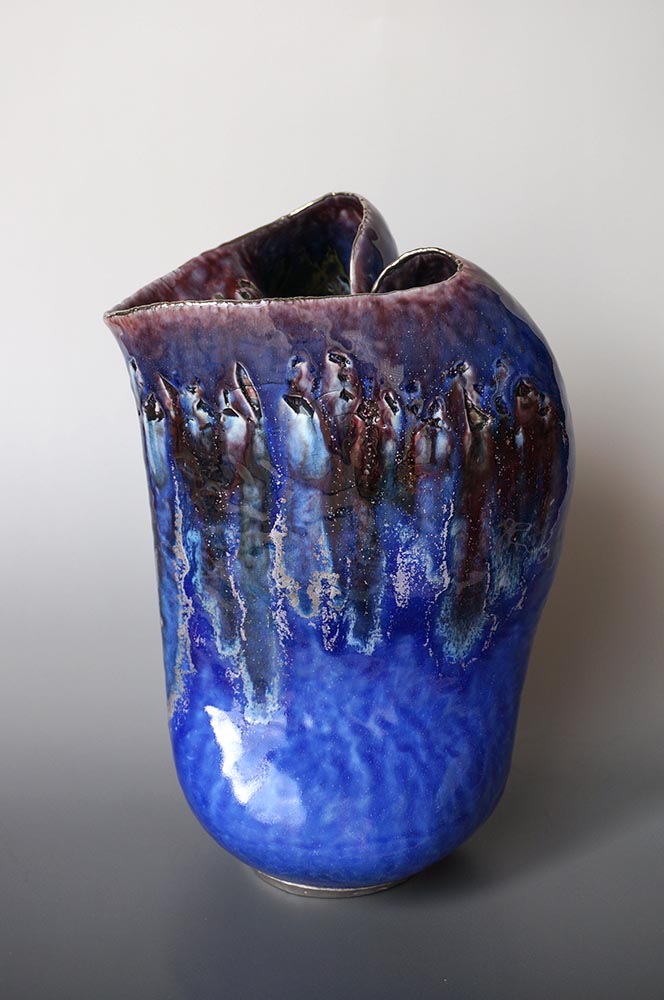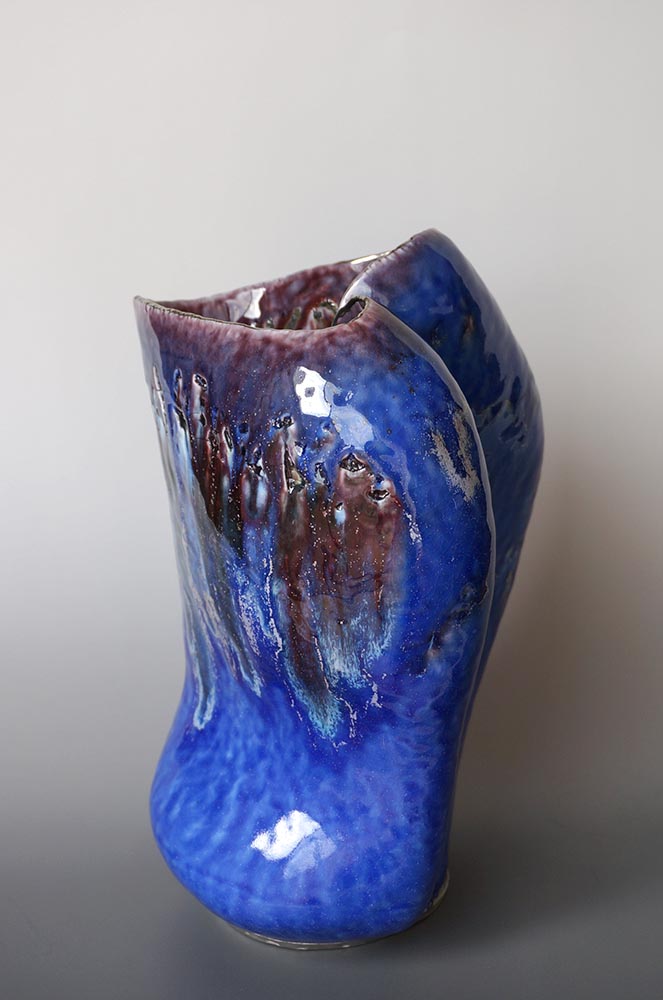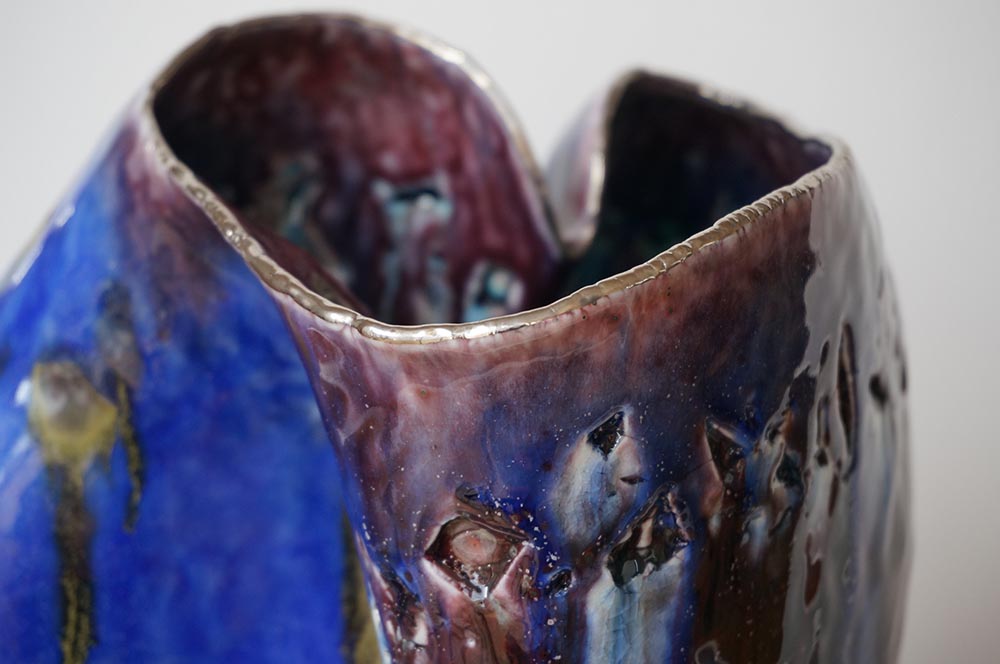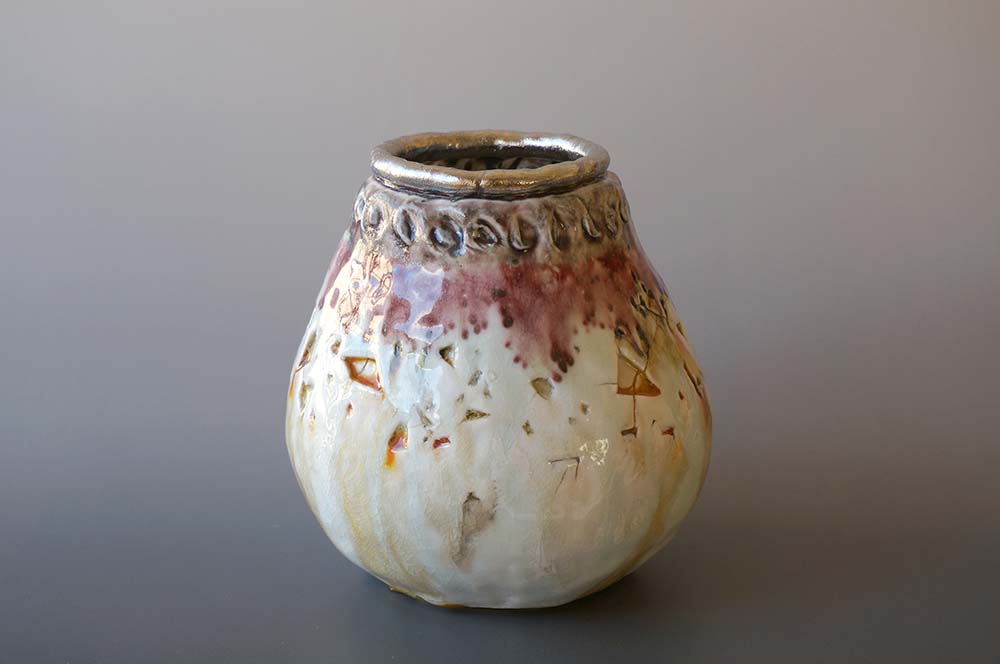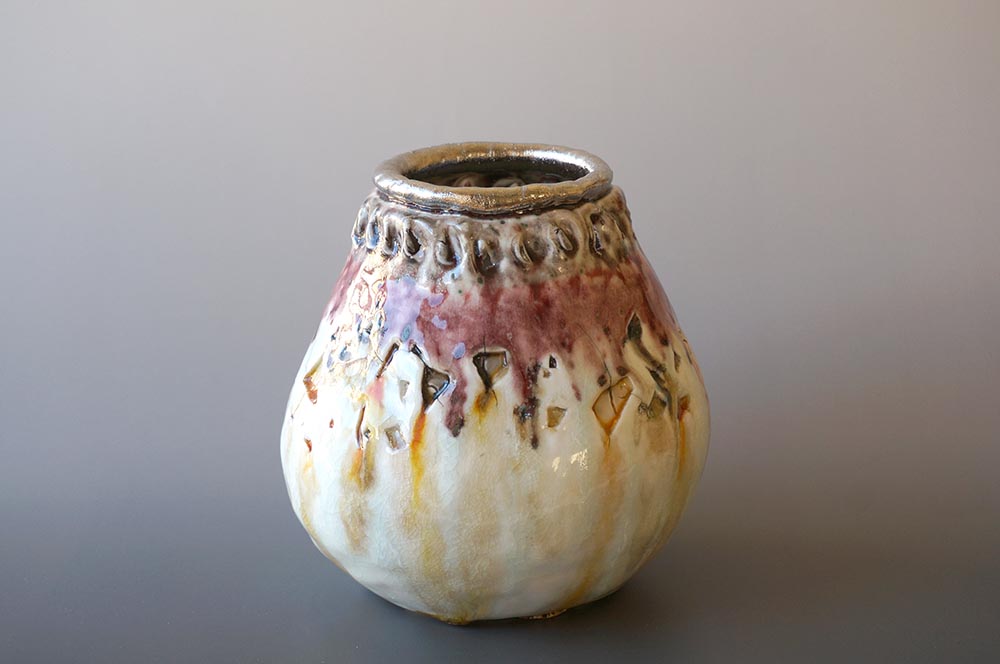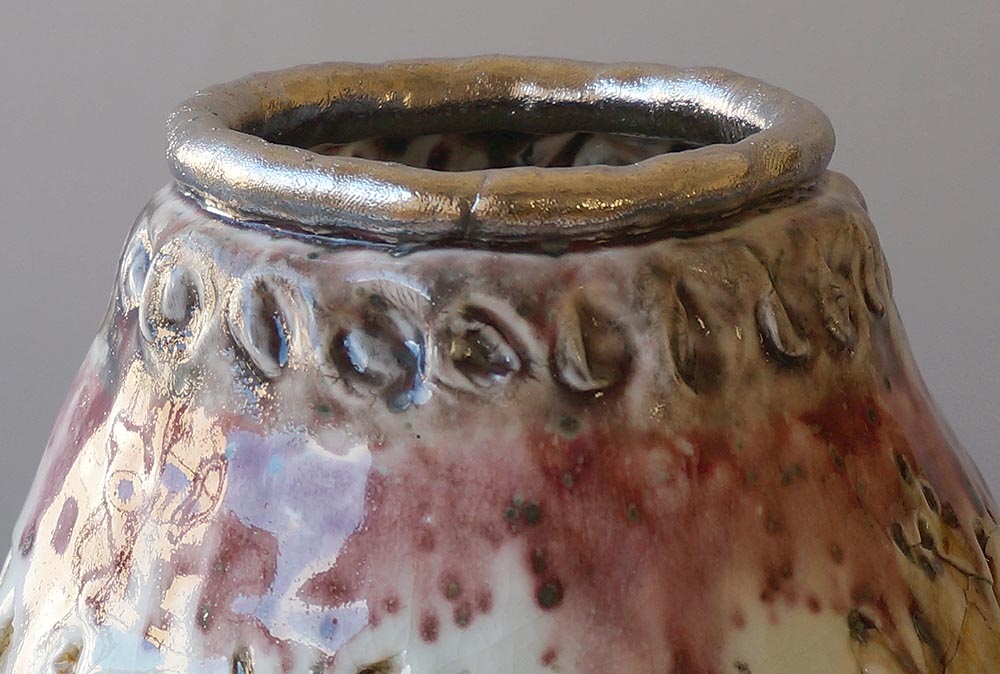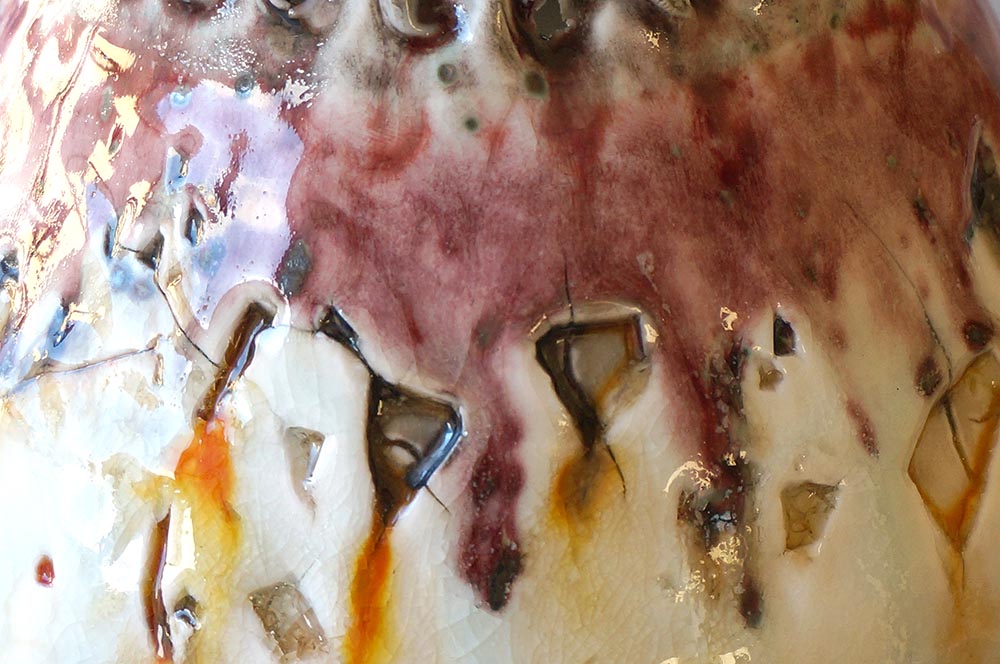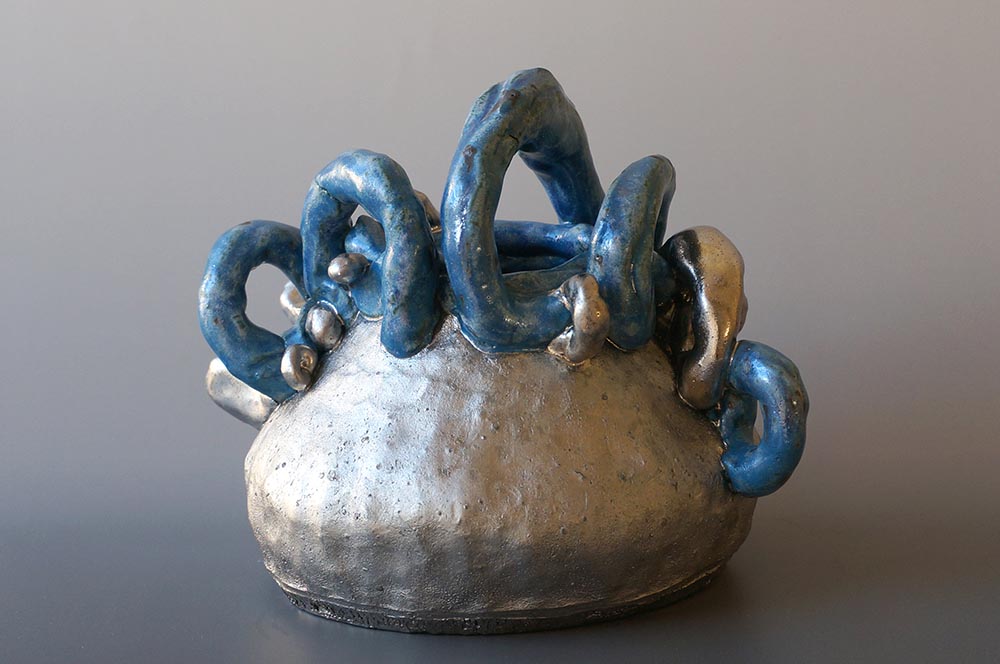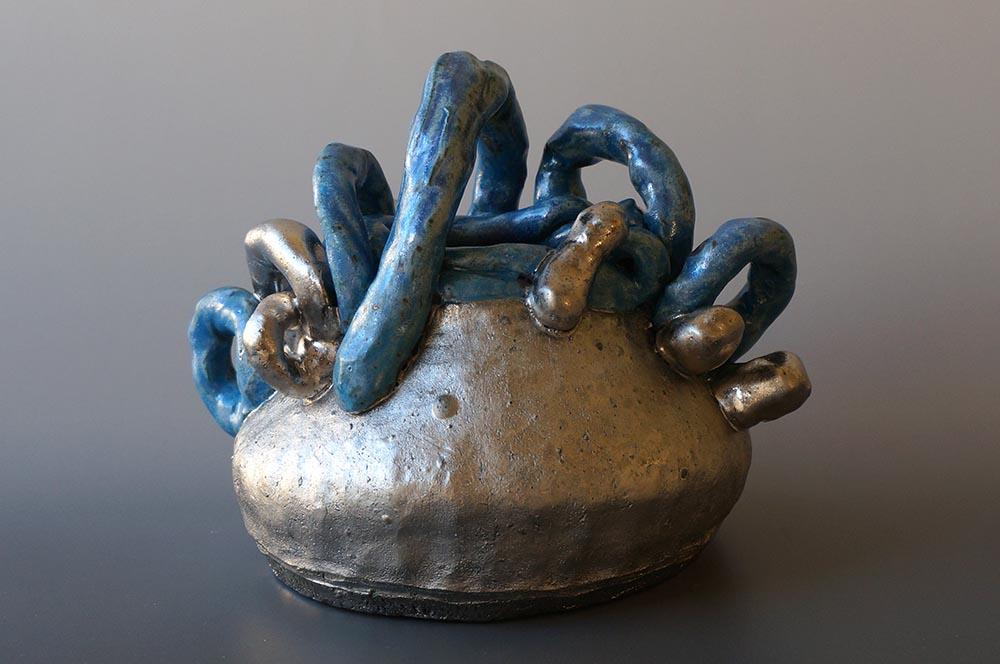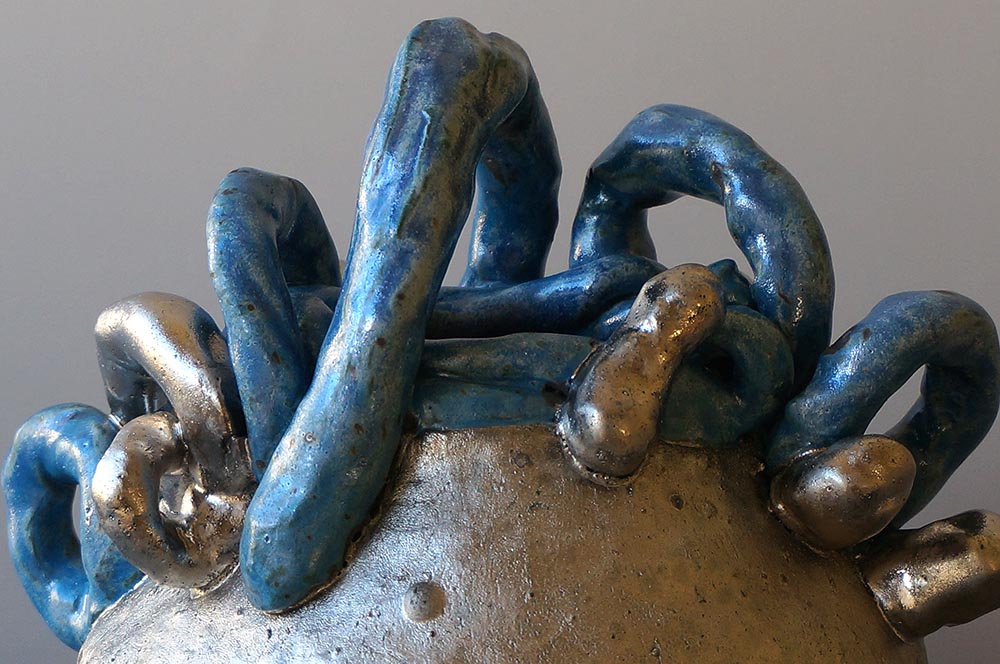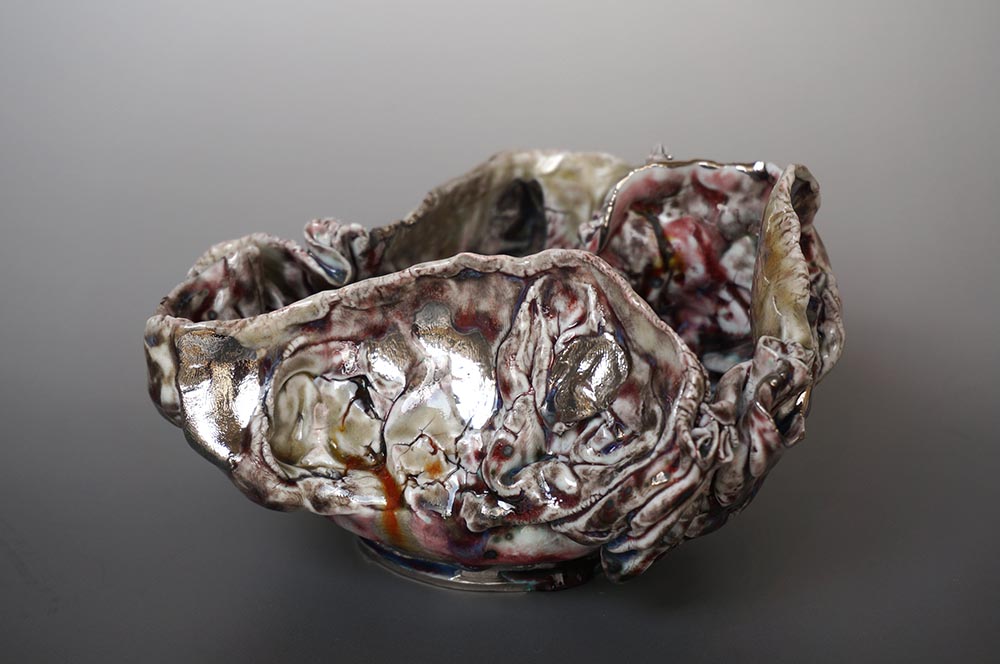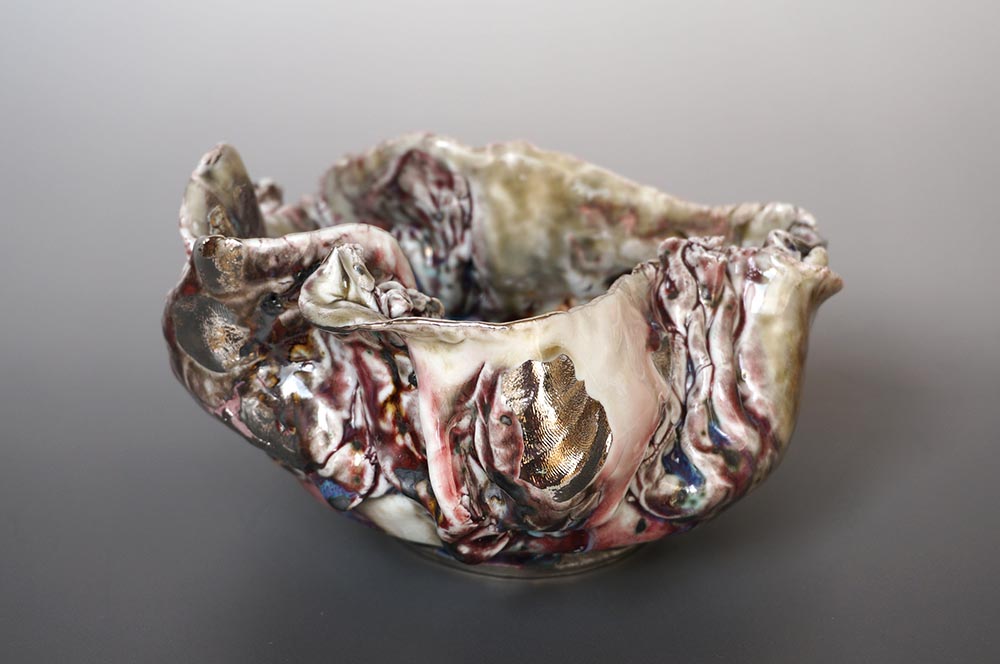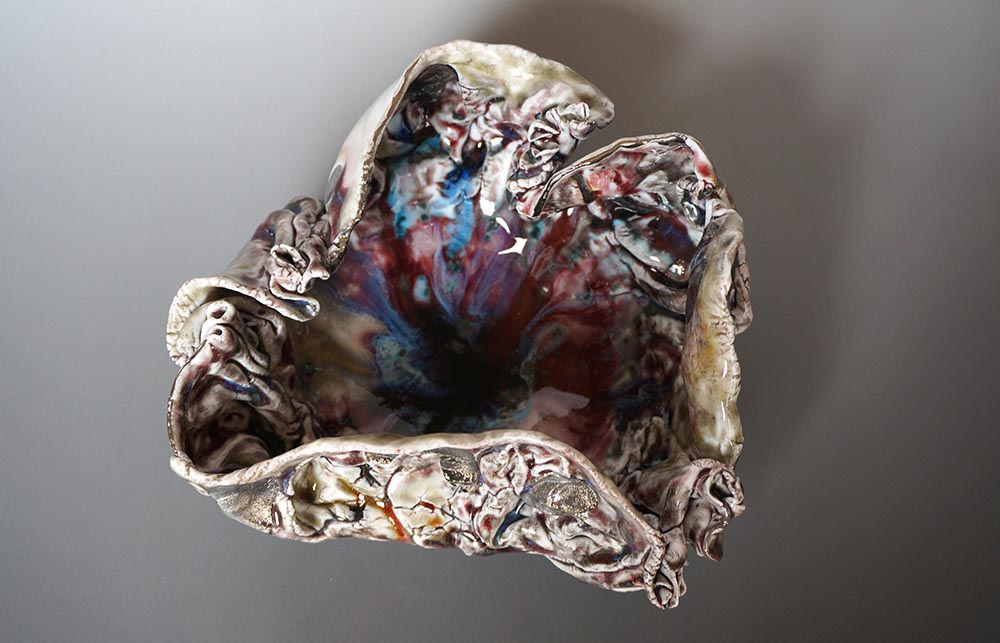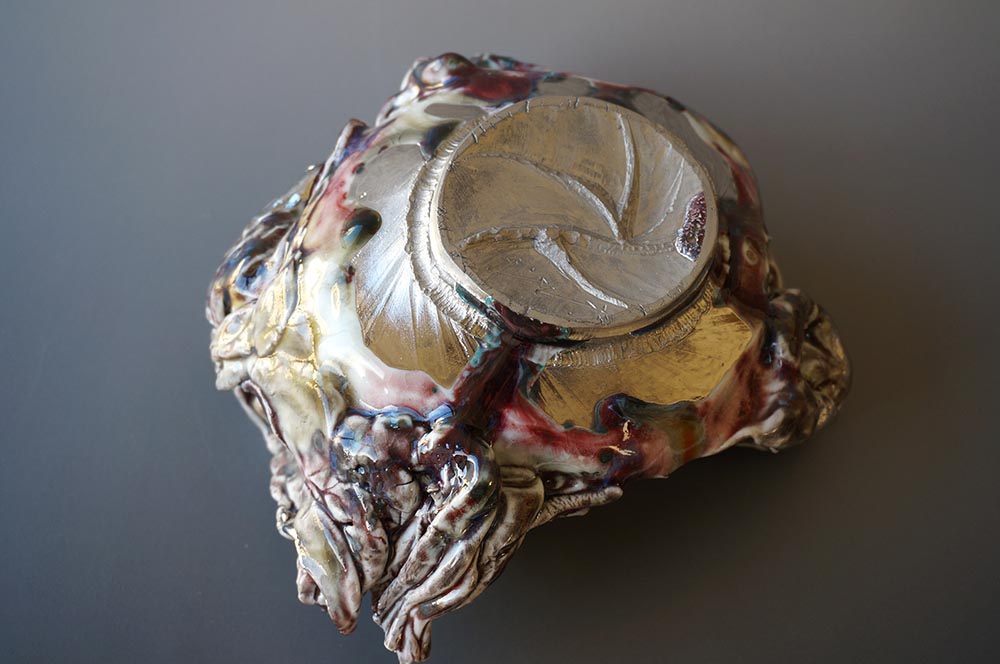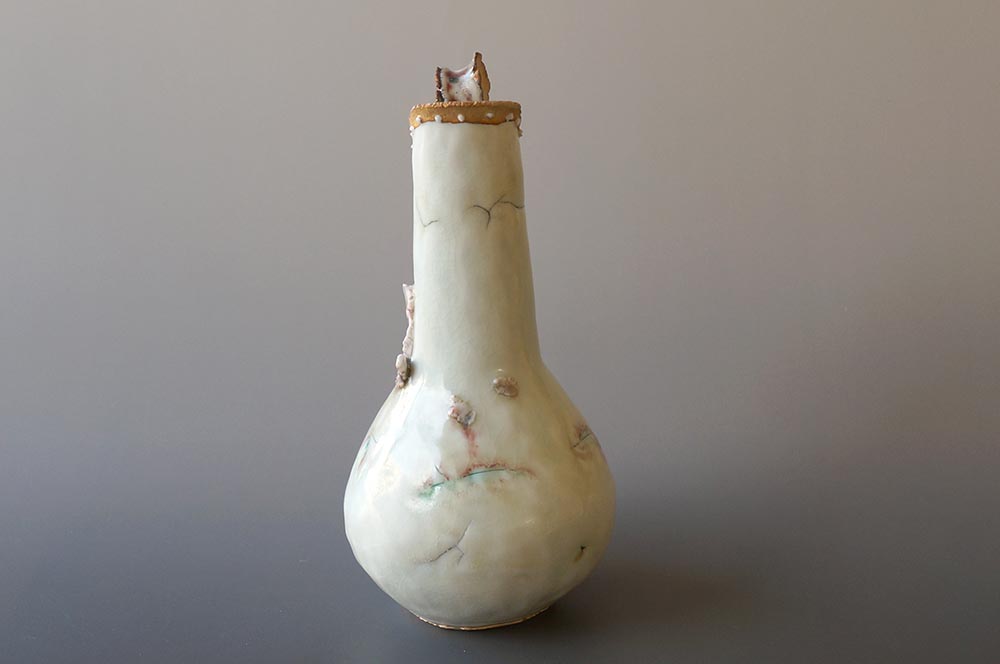IMPRINT
Introduction by Keiko Fukai
The young award winning ceramist Kawabata Kentaro continues to create his unique, characteristically organic form vessels and sculptures in which he embeds small pieces of colored glass. Through the careful control of both the bisque and final firings, the melted glass particles blend with the surface glaze, producing a delicate flow of color not unlike watercolors on paper.
While he continues to develop his vessel forms he is now challenging himself by producing a new“SOOS”series that are created from the clay that is cut off while he forming the pieces. These sculptural pieces are more abstract than his previous works, and the colors much darker. Kawabata’s serious interest in the power of regeneration is expressed by his finger prints that are imprinted on the surface of his works—representing a proof that his pieces are alive.
Most of my works are made by coil technique and small pieces of colored glass are embedded into the porcelain clay. When these glass bits melt during the firing, they blend into the surface glaze to produce delicate flows of color not unlike watercolors on paper.
There are several reasons I started using glass in my ceramic pieces.
First of all, glass is one of the most common ingredients in the clear glaze for ceramics. So I thought that solid glass embedded in the clay might provide the interesting affects on the surface while firing. It had been taken a while to learn the right temperature and time to get the satisfied result, but eventually, the unexpected beautiful patterns appeared on the surface of both inside and outside, and the embedded glass in porcelain clay became one of my signature styles.
Then, small spots that are filled with transparent glass in the clay play role as receptors that receive information from inside or outside. Since my vessels generally reflect human bodies, the colored transparent parts imply the passages connected between the internal world and the external world as well.
And finally, the patterns and colors created in the kiln accidentally are obviously fascinating. I still get excited to see the beautiful pieces that are emerged from the kiln after the firing.
Another characteristic part of my works might be the repetitive folded pleats decorated on the edges. I have been having a habit to pinch or fold the edges of soft stuff since I was a child, so making pleats at the end was started spontaneously, but I realized that I was fusing my memories or experiences into the pleats, even if they are very insignificant things happened in my everyday life.
Recently I am focusing the new series called SOOS, so want to explain about this series.
The pieces in my SOOS series are made with the porcelain clay that has been cut off while I am working and that has been left over from previous projects. When I was looking at a field of grass through the windows of my studio, I realized how vigorous the weeds were. No matter how frequently they are cut, they start growing and blooming again.. And the clipped weeds abandoned on the field become the organic fertilizer for the next season.
Also, in the Tohoku region it was shocking and unforgettable to see the cities and towns that were totally swept away by the tsunami. While I was looking at the empty ground, I noticed that the weeds were springing up even in the salty earth. I was impressed by the strength of those weeds and their perpetual cycle of life, and this inspired me to recycle materials and to use them for new works. This also influenced me to color my clay with a green pigment.
I like to play with words and sounds, so the SOOS includes the meaning of SOS from the abandoned clay and the SOURCE as the meaning of ORIGIN or BEGINNING.

